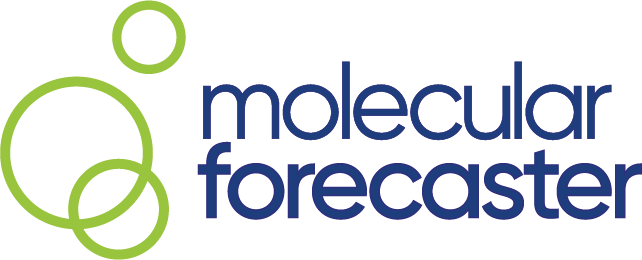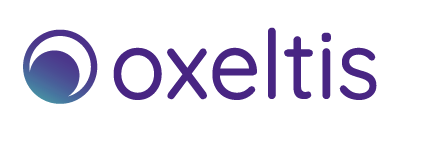In the quest for new medicines, developers seek to make AI their divining rod.
Petrina Kamya may be a biochemist, but the research and development centre she runs in Montreal is conspicuously devoid of lab coats, test tubes or chemicals.
Instead, the newly opened facility consists of rows of computer stations where she and a team of 14 developers are working to harness the power of artificial intelligence to accelerate the search for life-saving drugs.
The centre is part of Insilico Medicine, a biotech company that was founded in the United States and has its headquarters in Hong Kong. When the company expanded its research efforts, it chose Montreal.
“I know the potential here,” said Dr. Kamya, Insilico’s global head of AI platforms, who has lived in Montreal since she was teenager. “The idea is to grow and to become an integral part of the ecosystem.”
The ecosystem blends the city’s deep roots in medical research with its status as a launch pad for the AI boom. The latter stems from pioneering work by scientists affiliated with Mila, formerly the Montreal Institute for Learning Algorithms.
As a young scientist, Dr. Kamya watched as machine learning evolved from its rudimentary beginnings into applications as complex and powerful as ChatGPT. Now her aim is to facilitate AI’s leap into the drug-discovery arena – where the challenge lies in knowing which potential therapeutics are worth pursuing.
This is essential in the pharmaceutical industry, where developing and testing a drug candidate can take years of effort and billions of dollars of investment. Any shortcut that AI can offer could be a game changer.
Insilico is among the companies that are leading in the quest. It has 31 drugs under development, including one aimed at idiopathic pulmonary fibrosis, a rare lung disease. A Phase 2 clinical trial of the drug is now under way.
The algorithms the company uses are not simply sifting through the myriad of possibilities to find molecules that show a beneficial effect. Rather, Dr. Kamya said, they employ a “multimodal” approach that includes taking in results from published literature and grant applications to spot promising candidates.
But she cautioned that expectations for AI-guided drugs should be tempered with a strong dose of reality.
“What’s been shown is that we can get to the clinic faster than typical drug discovery companies by leveraging AI,” Dr. Kamya said. “Now the challenge is proving the performance of these AI-derived drugs in the clinic.”
Artificial intelligence gained prominence as a biomedical tool in November, 2020, when AlphaFold 2, an algorithm developed by British-based Google DeepMind, was the runaway winner of a competition called Critical Assessment of Structure Prediction, or CASP.
The competition requires candidates to predict the three-dimensional shapes of proteins based on their genetic sequences. Proteins are the building blocks of all living organisms and their shapes are crucial to biological function and to understanding disfunction in the case of a genetically linked disease.
It can take a research team years to deduce the structure of a single protein using conventional methods. Since it debuted, AlphaFold 2 has predicted more than 200 million.
Though it is fundamentally a computer science project, AlphaFold 2 has swept up major medical awards, including Canada’s prestigious Gairdner Award in 2023, and it is considered a likely candidate for the Nobel Prize.
Yet, when it comes to developing effective treatments, AlphaFold 2 is only the preamble. This is because even when a protein has been implicated in a disease, it remains a lock without a key unless a molecule can be found that will bind to it and deter its harmful effects.
“The next logical step would be the ability to predict how proteins interact with small, drug-like molecules,” said Cheryl Arrowsmith, a senior researcher at Toronto’s Princess Margaret Cancer Centre and a lab director with the Structural Genomics Consortium, an international effort to pinpoint the causes of disease. “Ultimately, what we would like to do is have early drug discovery be largely computational.”
This is where AI-guided drug discovery faces a significant barrier, Dr. Arrowsmith said, because of a dearth of public data that can be used to train an algorithm to know what molecules to look for.
The problem goes to the fundamental relationship between data and performance that made the AI revolution possible. ChatGPT took the world by storm in large part because its natural language algorithm could learn from reams of text available on the internet. AlphaFold 2 was trained on 100,000 protein shapes that were previously confirmed by scientists and available in a public database. There is no parallel repository to serve as a classroom for a drug-discovery algorithm. Instead, relevant information is dispersed and often proprietary.
Dr. Arrowsmith said the hurdle has led the consortium to launch a competition, modelled after CASP, to encourage and identify successful approaches to finding new drugs using computational tools.
Known as the CACHE challenge, the initiative is set up to provide competitors with a target – a protein that is known to be involved in a particular disease – and then evaluate their ability to find small molecules or “hits” that interact with that protein and that can be investigated further as potential therapies. The competition has been run as a series of overlapping challenges every four months, with each challenge lasting two years. Results from the first challenge – finding hits for a protein associated with Parkinson’s disease – are set to be released this month.
Matthieu Schapira, a professor of pharmacology at the University of Toronto who leads the effort, said the challenge provides a way to compare different methods of hit-finding to reveal where genuine progress is being made.
“Our hope is to set the stage for a breakthrough in computer-based drug discovery,” he said.
Since its launch, the competition has become a project of Conscience AI, a not-for-profit organization partly funded by the federal government to advance computer-aided drug discovery for neglected diseases. A key aspect of the organization’s mandate is to make results and data open to all to improve the overall success rate of the field as rapidly as possible.
“The truth about AI drug discovery is that it’s not very good yet,” said Ryan Merkley, the organization’s chief executive. ”I think the thing that gets us from hype to reality is finding ways to do really good iterative development and ideally learn from each other.”
That thinking is echoed by those who are taking part in CACHE, including Molecular Forecaster Inc., a computational chemistry company based in Montreal that has participated in each challenge so far. Josh Pottel, the chief executive, said there is a certain risk in participating if the company is seen to perform poorly in relation to others, but that risk is balanced with the opportunity to make scientific contributions and gain expertise.
“We get to improve algorithms, we get to learn from data that’s rigorous and homogeneous, done by world experts,” he said. “It’s very much a give and take.”
At larger scale, several of the world’s largest pharmaceutical companies have announced partnerships with technology companies to claim a slice of what Bloomberg this year declared a US$50-billion opportunity. Those who work at the forefront of AI are well aware of the growing interest.
Doina Precup, a McGill University professor who also leads the Montreal office of Google DeepMind, said that health- and drug-related projects are increasing as a share of her own work and, more broadly across Montreal’s AI sector.
Dr. Precup specializes in a form of AI called reinforcement learning, which is designed to improve its performance through trial and error. This makes it is particularly amenable to drug discovery, a type of problem where the desired solution is usually unknown. In cases where training data are insufficient, researchers are using the approach to develop algorithms that can do more with less.
Beyond technical improvements, Dr. Precup said, an additional factor driving the progress of AI-guided drug discovery is the enthusiasm of younger researchers who are entering the field with the goal of putting their expertise to use in a way that benefits people.
“They want to do something that matters,” Dr. Precup said. “Where they see that AI is going to make a positive difference for somebody.”
Ivan SEMENIUK
Our work on the CACHE initiative is detailed in our SGC-Case Study page.



